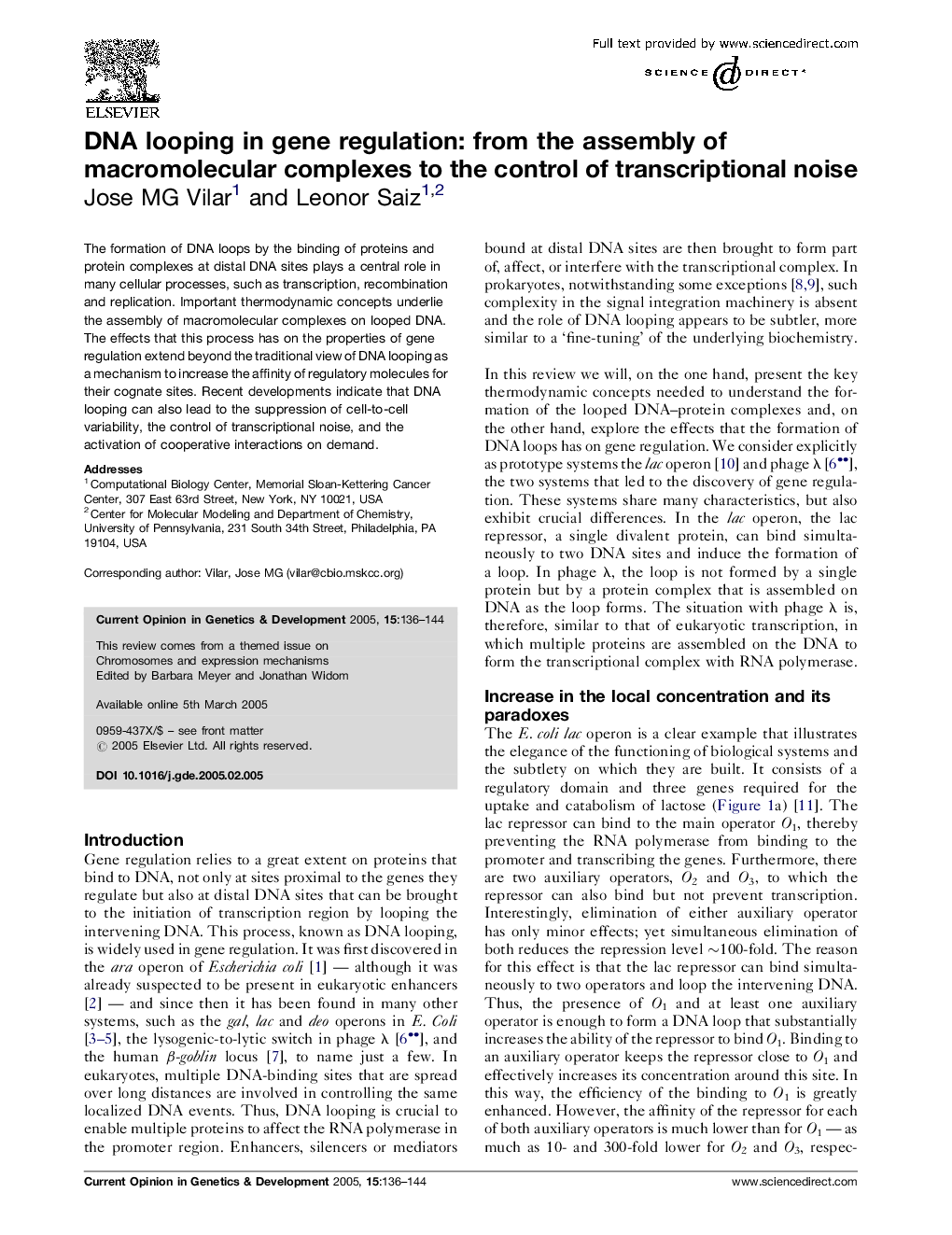| Article ID | Journal | Published Year | Pages | File Type |
|---|---|---|---|---|
| 9107624 | Current Opinion in Genetics & Development | 2005 | 9 Pages |
Abstract
The formation of DNA loops by the binding of proteins and protein complexes at distal DNA sites plays a central role in many cellular processes, such as transcription, recombination and replication. Important thermodynamic concepts underlie the assembly of macromolecular complexes on looped DNA. The effects that this process has on the properties of gene regulation extend beyond the traditional view of DNA looping as a mechanism to increase the affinity of regulatory molecules for their cognate sites. Recent developments indicate that DNA looping can also lead to the suppression of cell-to-cell variability, the control of transcriptional noise, and the activation of cooperative interactions on demand.
Related Topics
Life Sciences
Biochemistry, Genetics and Molecular Biology
Developmental Biology
Authors
Jose MG Vilar, Leonor Saiz,
